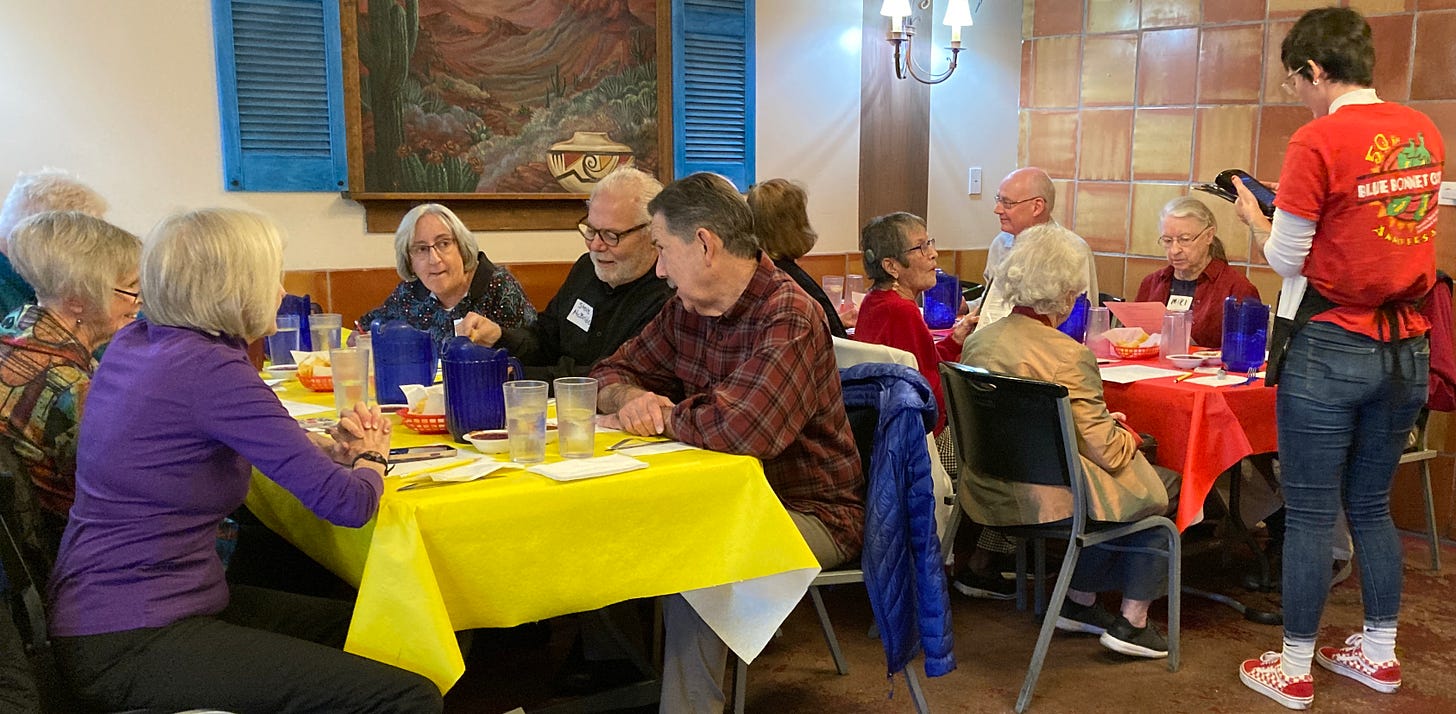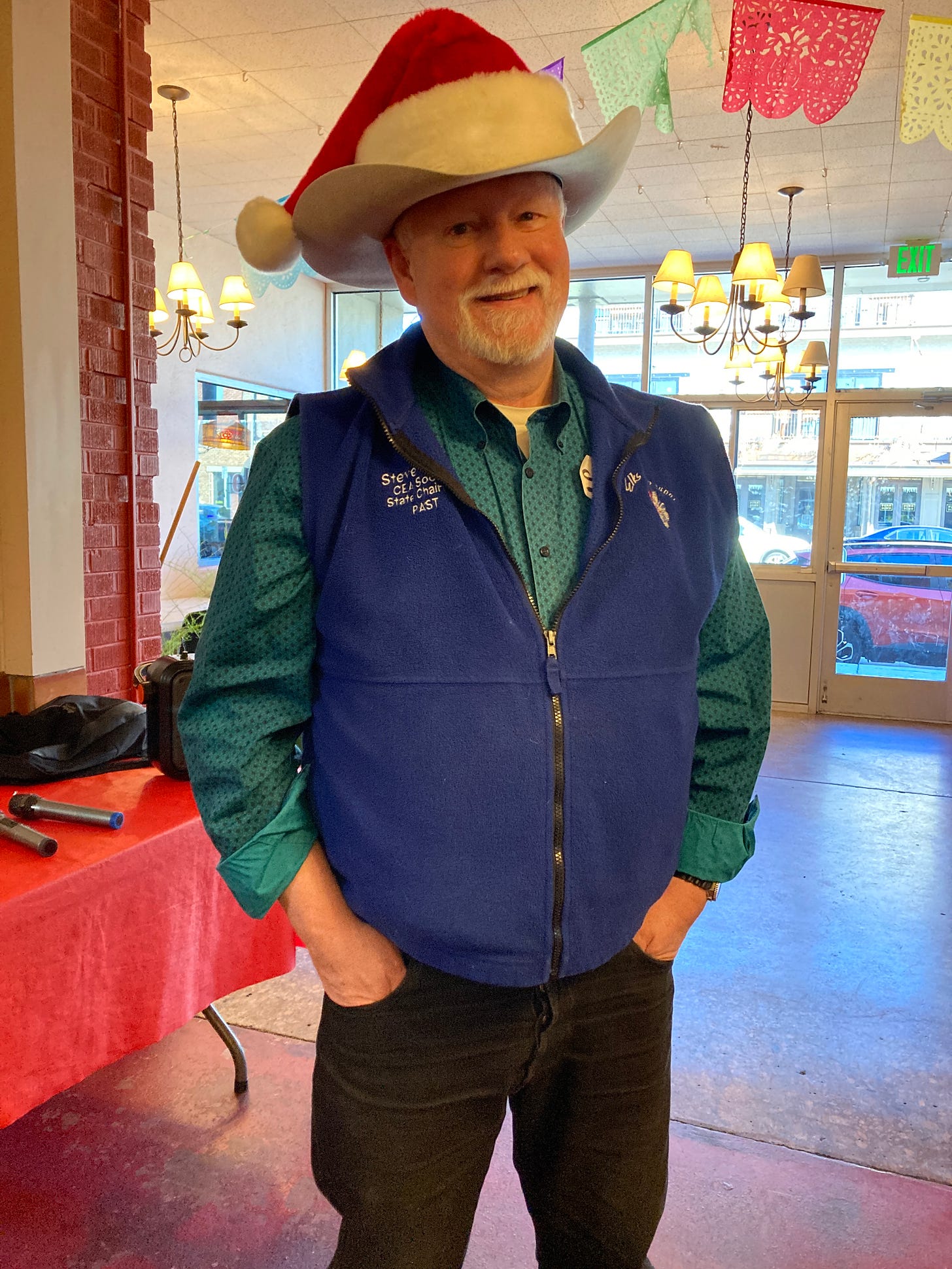Let’s talk about…NOISE!
By Paula DeJohn
Ironically, a major source of irritation for people with hearing loss is loud sounds. Because hearing aids don’t tune out ambient sounds as well as our brains do (source: my first audiologist) a crowded room or passing traffic may seem uncomfortably noisy while folks with normal hearing may be unfazed. Even with no or inadequate hearing devices, sounds interfere with our ability to understand voices.
A new definition
While science has yet to solve that dilemma, it has recently refined its understanding of the differences between sound and noise. In June 2023, the International Commission on Biological Effects of Noise at its 14th Congress in Belgrade, Serbia, endorsed an expanded definition of “noise” that includes sounds many of us don’t think of as noise.
As Daniel Fink, MD, an expert on acoustics and advocate for reduced public noise, explains, “The words ‘sound’ and ‘noise’ are used interchangeably in acoustics, electronics, and physics, but have different connotations when applied to listeners.”More specifically, he adds, “Sound is defined as vibrations that travel through air or another medium that can be heard when they reach a person’s or animal’s ears. Noise is defined as unwanted sound.” The new definition takes into account the fact that even “wanted sound” can be harmful. Think back to those great rock concerts, or the shriek of jets overhead at an air show. That sound, whether wanted or not, causes auditory damage.
Even those who escape hearing loss can feel stress, which disrupts thought, learning, immune function and cardiovascular health, Dr Fink, who prefers to be called Dan, notes. According to the new definition, “Noise is unwanted and/or harmful sound.” In an article in the November 2023 Hearing Journal, Dan says, “Noise has been called ‘the new secondhand smoke.’”
Noise causes hearing loss in the public, not just in workers with occupational exposure. Wanted noise, whether from a rock concert or use of power tools, can cause auditory damage. Unwanted noise is stressful, and stress is bad for human health. Noise pollution, largely from transportation noise, is generally accepted as part of modern life in industrialized societies, but it harms our health. Transportation noise causes increased cardiovascular disease and death. …Despite thinking that we are used to the hum of road traffic outside our homes and schools and workplaces, and in many locations noise from trains or airplanes, we don’t habituate to these involuntary physiological responses, which lead to increased cardiovascular disease and death.
That is why, according to Dan, so-called “age-related hearing” isn’t really a part of aging; it’s caused by the noise generated by modern society. If only adults and their children would make an effort to avoid and advocate against the background noise that surrounds us in daily life, our society could reduce hearing loss in older people.
First, as people become aware of the dangers of noise for hearing, recognizing that hearing loss in old age isn’t part of normal physiological aging but largely represents noise-induced hearing loss, at least some will attempt to reduce voluntary noise exposure for themselves and their children. Hearing loss, currently affecting about 15 percent of the population, should decrease over time. Second, when people become aware of the non-auditory health impacts of noise—that unwanted noise is literally sickening and killing them—with involuntary exposure to noise pollution out of their control, others may push their elected officials to pass legislation and to enforce existing regulations about transportation noise.
Dan says he plans to contact organizations related to hearing loss, including HLAA, to encourage them to adopt the new definition. He has already organized one group, The Quiet Coalition. He is also a former board member of the American Tinnitus Association. He serves as an expert consultant to the World Health Organization on its Make Listening Safe Program, and as a subject matter expert on noise and the public to the National Center for Environmental Health at the Centers for Disease Control and Prevention.
Dangerous dining
The Denver Chapter is working to educate restaurant owners about the dangers of loud noise. It’s more than annoying; it can damage hearing.
Members can obtain business cards identifying the chapter as well as an app from SoundPrint that measures decibel levels. The app then collects the data from those restaurant visits to map results for each city as part of a nationwide survey. The app is available for both iPhones and Android phones. The card includes noise guidelines, making it an educational tool for the public:
Less than 70 dBA: quiet, safe for hearing health
71-75 dBA: moderate, safe for hearing health
76-80 dBA: likely safe but difficult for conversation
More than 81 dBA: unsafe for hearing health.
SoundPrint’s founder is Gregory Scott of New York. In an early survey in 2019, Scott found that New York City restaurants averaged 77 dBA. “Bars are even worse, with sound levels of 80 dBA,” he reported. “That puts people in danger of noise-induced hearing loss.”
A quieter place to heal
Awareness of the need to minimize ambient noise has reached the worlds of architecture and health care. A recent renovation of the University of Massachusetts Memorial Medical Center in Worcester, MA, featured noise abatement innovations from the ground up, according to an article in the April, 2019 issue of Health Facilities Management.
“Patients reported a 100 percent improvement in reduced noise and quietness at night,” the article states. Among noise-reducing innovations were locating fabric-wrapped panels above counters at nursing stations to absorb sound, and specialized rubber flooring in high-traffic areas.
Occupational hazard
Serving in the military means being exposed to a variety of what Dan would call harmful environmental sounds, and they are not all combat related. Currently, 1.7 million veterans receive compensation for tinnitus, and 1.1 million receive compensation for hearing loss. According to the Department of Veterans Affairs, most of the hearing loss is the result of noise exposure from gunfire, aircraft, tanks and bombs. But just working on a flight line or maintaining equipment can mean exposure to high-level, sustained noise. And the VA also treats veterans who, like the rest of the population, tend to lose hearing as they age.
Loud music: cool and dangerous
Speaking of war sounds, teenagers listening to high-volume music on headphones alarmed the Hearing Health Foundation so much the HHF worked with an advertising agency to produce public service ads and a video entitled “Grenades.” The ads are on public transportation used by teenagers and they depict headphones as a pair of grenades covering someone’s ears. “Listening to headphones at 100 dB for just 15 minutes can cause permanent hearing loss,” the ads warn. 100 dB is where many headphones max out, according to HHF. <>
Holiday party: The Denver Chapter celebrated at the Blue Bonnet restaurant in Denver. Below, Steve Nelson is the cowboy Santa; Mary and Ernie share a taco feast.
*Happy New Year!*
The Denver Botanic Gardens were aglow for the holidays. Photo by Sue Weinstock







